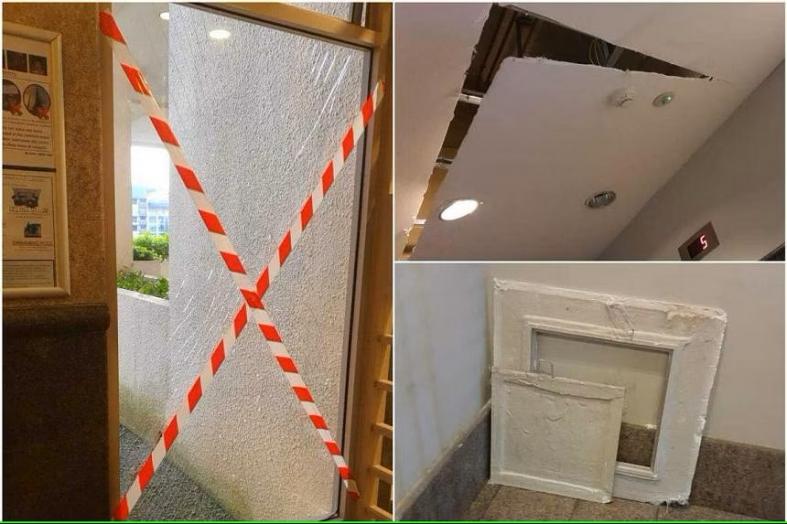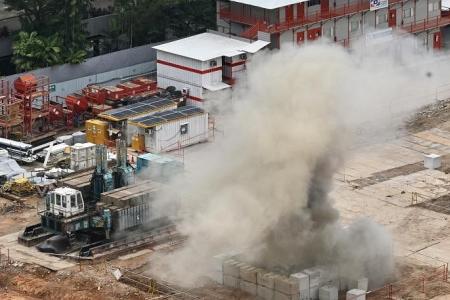Buildings near bomb site structurally safe, damage might be from pre-existing conditions: BCA
The buildings near the bomb site in Upper Bukit Timah where the World War II relic was detonated on Tuesday are structurally safe for residents to return to, said the Building and Construction Authority (BCA) on Wednesday.
Damage to Hazel Park condominium’s common areas including cracked glass, dislodged plaster from ceilings and fallen light bulbs, are non-structural, the authority added.
“Some could be due to the impact of the blast while some could be pre-existing condition before the disposal operation,” said BCA.
The damaged areas in Hazel Park condominium have been cordoned off as a safety precaution and minor repair works are already underway, it added.

A team of 46 BCA engineers on Tuesday inspected Hazel Park condominium and other buildings within a 200m radius of the bomb after the 100kg WWII relic was disposed of in two controlled explosions. All were found to be structurally safe.
BCA said: “Buildings in Singapore are structurally designed to withstand tremors, including effects of a blast from a distance.”
There were no other reports of damages in other buildings within 200m of the bomb disposal site, it added.
In the largest evacuation operation involving a WWII relic, more than 4,000 residents within a 200m radius of where the unexploded bomb had been found were made to vacate their homes on Tuesday morning before the detonation.
Residents were told it was safe to go home at about 5pm on Tuesday, some nine hours after they had evacuated.
At Hazel Park condominium, they returned to find cracked windows, broken lightbulbs and parts of the ceiling dislodged at common areas.
Mr Rafael Ansey, a resident at Hazel Park condominium, said he was told by the condo management that a window at the lobby of a block had cracked.
The 35-year-old software engineer said some of his neighbours in units that faced the detonation site had found broken lightbulbs in their premises.
In pictures sent to ST by residents, there were also cracks in the ceiling of lift lobbies, and some parts had fallen off.
Hazel Park declined to comment on the damage when contacted by ST.
The aerial bomb was successfully disposed of by the SAF Explosive Ordnance Disposal team at 1.45pm, the police said in a Facebook post.
A blast from the first detonation could be heard from Block 153 Gangsa Road at around 12.30pm. The blast from the second detonation was heard at Senja-Cashew Community Club, about 2km away.
The police also said the Building and Construction Authority, national water agency PUB, grid operator SP Group and the Housing Board conducted assessments of the construction site after the detonation.
Nearby drains and pipelines, and evacuated buildings and roads were found to be structurally safe, and residents were allowed to return home.
In an Instagram post on Tuesday, the Singapore Armed Forces said the bomb had to be disposed of in situ because its parts were expected to be unstable after decades of deterioration, and moving the bomb would have triggered an explosion.
More than 530 police officers and 45 people from the SAF were involved in the operation.
Tuesday’s bomb disposal, however, was not the largest bomb relic that the Ministry of Defence has handled.
In 2016, a 227kg unexploded aerial bomb was disposed of by the army in Pulau Senang.
Ammunition like projectiles and grenades have also been disposed of.
Get The New Paper on your phone with the free TNP app. Download from the Apple App Store or Google Play Store now

